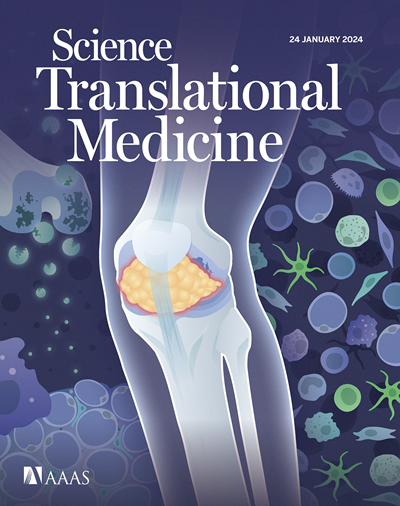具有视网膜再生能力的人视网膜干细胞的鉴定与表征
IF 15.8
1区 医学
Q1 CELL BIOLOGY
引用次数: 0
摘要
人类视网膜干细胞在再生医学中有很大的前景,但它们的存在和特性仍然难以捉摸。在这里,我们对人类胎儿视网膜进行了单细胞多组学和空间转录组学研究,并发现了一个细胞亚群,即人类神经视网膜干细胞样细胞(hNRSCs),它不同于视网膜色素上皮干细胞样细胞和传统的视网膜祖细胞。我们发现这些hNRSCs存在于睫状体边缘区的外周视网膜中,表现出大量的自我更新和分化潜力。我们对人类视网膜类器官(hROs)进行了单细胞和空间转录组学分析,发现hROs中含有与胎儿视网膜hNRSCs具有相似转录谱和发育轨迹的hNRSCs群体,具有再生所有视网膜细胞的潜力。此外,我们确定了关键的转录因子,如MECOM,控制hNRSC对神经视网膜形成的承诺,并调节hROs的修复过程。hro源性hNRSCs移植到视网膜色素性视网膜炎rd10小鼠模型中分化并整合入视网膜,减轻视网膜变性,改善视功能。总的来说,我们的工作确定并表征了来自人类视网膜的视网膜干细胞的一个独特类别,强调了它们的再生潜力和移植治疗的前景。本文章由计算机程序翻译,如有差异,请以英文原文为准。
Identification and characterization of human retinal stem cells capable of retinal regeneration
Human retinal stem cells hold great promise in regenerative medicine, yet their existence and characteristics remain elusive. Here, we performed single-cell multiomics and spatial transcriptomics of human fetal retinas and uncovered a cell subpopulation, human neural retinal stem-like cells (hNRSCs), distinct from retinal pigment epithelium stem-like cells and traditional retinal progenitor cells. We found that these hNRSCs reside in the peripheral retina in the ciliary marginal zone, exhibiting substantial self-renewal and differentiation potential. We conducted single-cell and spatial transcriptomic analyses of human retinal organoids (hROs) and revealed that hROs contain a population of hNRSCs with similar transcriptional profiles and developmental trajectories to hNRSCs in the fetal retina potentially capable of regenerating all retinal cells. Furthermore, we identified crucial transcription factors, such as MECOM, governing hNRSC commitment to neural retinogenesis and regulating repair processes in hROs. hRO-derived hNRSCs transplanted into the rd10 mouse model of retinitis pigmentosa differentiated and were integrated into the retina, alleviated retinal degeneration, and improved visual function. Overall, our work identifies and characterizes a distinct category of retinal stem cells from human retinas, underscoring their regenerative potential and promise for transplantation therapy.
求助全文
通过发布文献求助,成功后即可免费获取论文全文。
去求助
来源期刊

Science Translational Medicine
CELL BIOLOGY-MEDICINE, RESEARCH & EXPERIMENTAL
CiteScore
26.70
自引率
1.20%
发文量
309
审稿时长
1.7 months
期刊介绍:
Science Translational Medicine is an online journal that focuses on publishing research at the intersection of science, engineering, and medicine. The goal of the journal is to promote human health by providing a platform for researchers from various disciplines to communicate their latest advancements in biomedical, translational, and clinical research.
The journal aims to address the slow translation of scientific knowledge into effective treatments and health measures. It publishes articles that fill the knowledge gaps between preclinical research and medical applications, with a focus on accelerating the translation of knowledge into new ways of preventing, diagnosing, and treating human diseases.
The scope of Science Translational Medicine includes various areas such as cardiovascular disease, immunology/vaccines, metabolism/diabetes/obesity, neuroscience/neurology/psychiatry, cancer, infectious diseases, policy, behavior, bioengineering, chemical genomics/drug discovery, imaging, applied physical sciences, medical nanotechnology, drug delivery, biomarkers, gene therapy/regenerative medicine, toxicology and pharmacokinetics, data mining, cell culture, animal and human studies, medical informatics, and other interdisciplinary approaches to medicine.
The target audience of the journal includes researchers and management in academia, government, and the biotechnology and pharmaceutical industries. It is also relevant to physician scientists, regulators, policy makers, investors, business developers, and funding agencies.
 求助内容:
求助内容: 应助结果提醒方式:
应助结果提醒方式:


